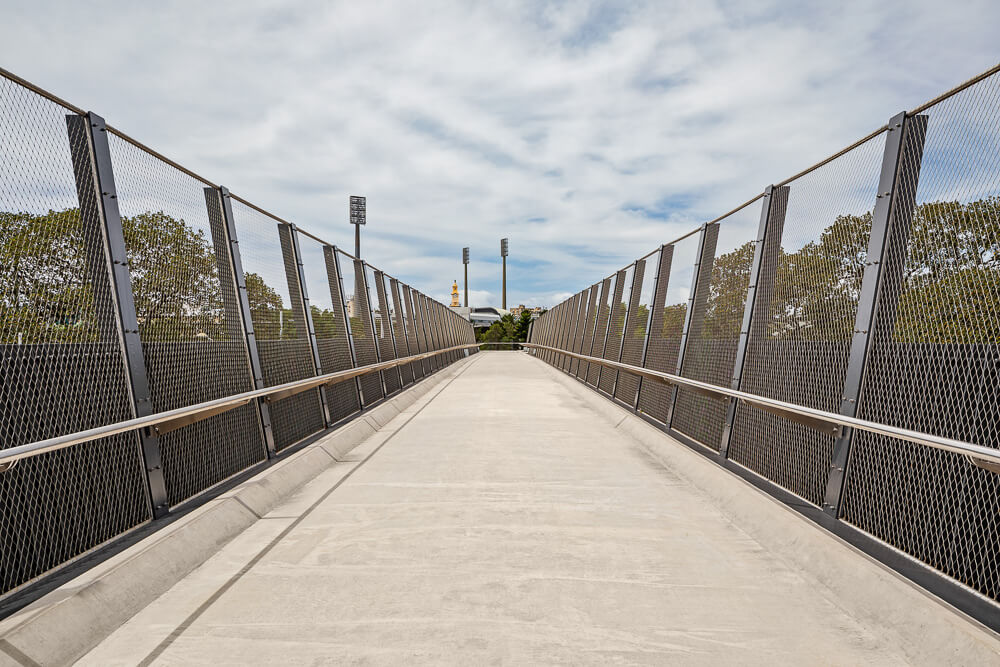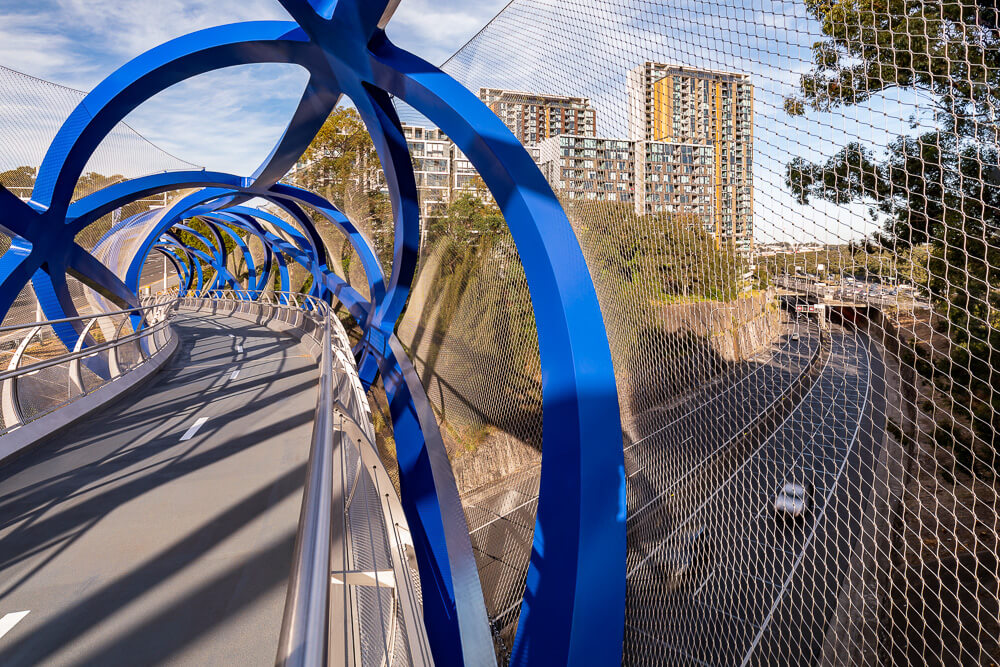Barriers on footbridges over busy roads need to address multiple safety issues. This includes prevention of climbing and of objects being thrown or dropped over the edge onto passing vehicles or people.
It’s also important that the barrier looks good. No one wants to design and build a bridge that is beautiful and sculptural in form, only to have it marred by an unattractive barrier!
Here are four considerations for barriers on footbridges, and how a material like Jakob’s Webnet mesh can meet all safety codes and contribute to a bridge’s appearance.
4 key safety and design factors for bridge barriers
- Climbability – structures such as bridges of four metres or more above the ground surface must prevent people from climbing and falling. This means any barriers should not provide footholds between 150mm and 760mm above the floor of the bridge.
- Anti-throw screening – where anti-throw screens are required on a footbridge, they must rise at least 3m above the surface of the bridge floor.
- Construction method – when a bridge is positioned over a busy road, it’s important that the barrier can be installed with minimal interruption to the public.
- Design matters – modern footbridges are often designed to be architectural features in their own right and may have curved or irregular geometric shaping. A well-designed barrier will conform to all the contours and shapes of the bridge and not interfere with its design intent in any way.
A barrier to meet all needs through Webnet
Jakob’s Webnet mesh is an ideal material for creating footbridge barriers as it can meet all safety codes, while being malleable and transparent enough to conform to bridge design and not impede visibility or airflow.
For example, Webnet can comply with load requirements and make an excellent near-invisible anti-throw screen. Climbability can be addressed by ensuring the aperture opening of the mesh is no more than 40mm in size (although in some cases certifiers may require it to be smaller).
Here are some practical examples that demonstrate how Webnet makes the grade.
Albert Tibby Cotter pedestrian bridge, Sydney
This footbridge passes over busy Anzac Parade. It has a curving form that was designed to fit in to the surrounding landscape.
The Webnet mesh safety barrier not only conforms to the curves of the bridge, it’s also light and sheer in appearance while being extremely robust at the same time.
Tensile also devised a method that meant most of the mesh could be built offsite and then lifted into place, which helped minimise disruption.
Elizabeth Quay footbridge, Perth
The Elizabeth Quay bridge provides a link between the city of Perth and its waterfront and needs to accommodate the passage of ferries.
The structure needed a screen to comply with large crowd loads and conform to its dynamic S-curve shapes. All this was met through 50mm aperture mesh woven from 2mm wire which was matched to the bridge’s curves and integrated with the existing balustrade.
CBD and South East Light Rail bridge, Sydney
The anti-throw mesh screen for this light rail pedestrian bridge was unusual in that it was created from a variety of aperture sizes to meet the strict safety codes. This includes 25mm mesh for the rail section, and 50mm for over roads.
Most of the screen was built and mounted onto frames offsite and then simply slotted and bolted into position after the bridge was in place.

Lachlan’s Line pedestrian bridge, Sydney
The screen for this boldly-designed footbridge with its helical forms was created from 63 pieces of 6mm wire cable mesh, with each piece being uniquely shaped to suit its final position on the bridge.
Construction work for the bridge itself was done offsite and then transported and crane-lifted into position with the mesh screens already in place.
Need more information?
If you would like to know more about barrier considerations for footbridges get in touch with us for a discussion.







































